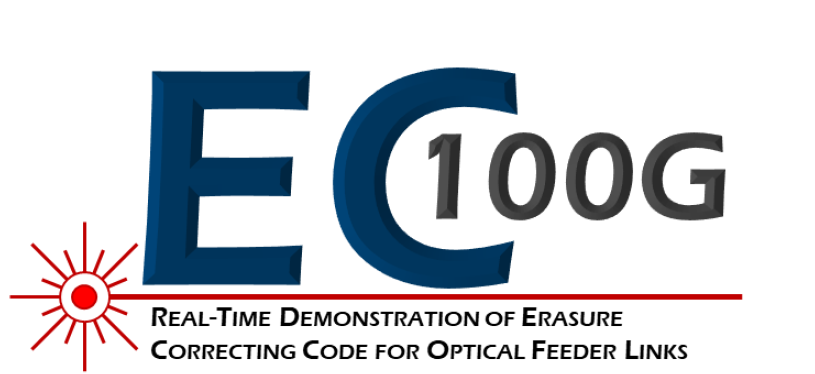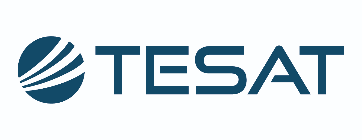
-
StatusOngoing
-
Status date2025-10-02
-
Activity Code3C.048
The EC100G project demonstrates real-time high data rate free space communication through the atmosphere, leveraging of off-the shelf fibre optical transceivers. Coding and decoding are performed at 100Gbit/s and demonstrated in a representative experiment, emulating the characteristics of low Earth orbit (LEO) direct-to-earth optical communication links. The outcome enables a new architecture for the LEO data delivery problem and allows transferring huge amount of data from low-cost components aboard the satellite to a ground terminal. The digital signal processing blocks interface with commercial optical transceiver and are therefore independent of the underlying transmission technology. That offers flexibility and in-case of commercial transceivers also a low-priced option for future mission that want to make use of high data rate Data Terminal Equipment (DTE) optical links.
The commercial transceivers do not allow changing the internal data processing, any coding measures or the conversion between electrical and optical signals. Therefore, a measure had to be found that could be implemented above the signal processing and protocols already implemented in the optical transceiver. In addition, those functionalities have to be implemented in an effective way to be able to process the function in real-time.
Coding and decoding at 100 Gbit/s needs very fast access to memory. Even for compensating short fadings a significant size of memory is needed to enable the time diversity needed. State-of-the-art in-chip memory seems to solve that challenge. However, it has not yet verified that also the processing power is sufficient to achieve the target speed.
The EC100G project performs important steps in order to identify the currently achievable performance for earth-satellite links. For the first time commercial transceivers – offering high data rates and high-speed processing in a small volume for comparably low budget – are used to demonstrate a ground-satellite link.
The commercial transceivers do already implement a forward error coding (oFEC), but that is optimised for transmission over fibre. The whole transceiver setup cannot be changed, without losing the described advantages of volume and budget.
Therefore additional 100Gbps real-time coding in addition to the transceiver built-in FEC is implemented to mitigate the fading caused by the atmosphere. Furthermore the implementation facilitates ethernet frames – enabling an easy integration in packet based networks.
To realise a commercial product making use of the methods defined and demonstrated in the frame of the EC100G project, the following two major building blocks need to be brought to a level, where they can easily integrated in a modern satellite communication payload:
Digital Signal Processing Unit: This unit does the additional real-time coding and decoding on top of the transceiver built-in codes.
Optical Transceiver: The commercial optical transceiver used for the communication responsible for sending and receiving the optical signal.
Both building blocks have to be implemented in the space and ground equipment. The advantage of this separation is the fact, that they are interchangeable. The interface of the two blocks is standardised and therefore the blocks can be exchanged independently.
As written above the main building blocks relevant for this activity is the digital signal processing unit and the commercial optical transceiver. However, to achieve an optical direct-to-earth transmission those blocks need to be integrated in a space equipment and a ground terminal.
The system architecture is not changed in comparison to the systems used up to date for free space optical communications. This is another advantage of the described product setup, as one could even think about using the developed technology as an optional function block. That would enable space laser terminals being able to handle both scenarios. Space links that do not make use of the described technology here and ground links that have that option switched on and mitigating the atmospheric impact.
The project has five milestones. These are the kick-off, the review of individual project phases and the completion of the project. The project phases are divided into the definition of the technical requirements and the development and definition of the technical baseline for the realisation of the project. This technical baseline is then verified and realised, including a method for implementation and verification.
Following implementation and verification, the technology is evaluated and a roadmap for possible further activities is defined.
The EC100G project has evolved to a status where the erasure codes have been defined and the implementation of the coding/decoding is currently ongoing.
The first Field Programmable Gate Arrays (FPGA) modules have been created and could show that the chosen FPGA technology is sufficient to enable a coding/decoding speed of 100Gbit/s.




